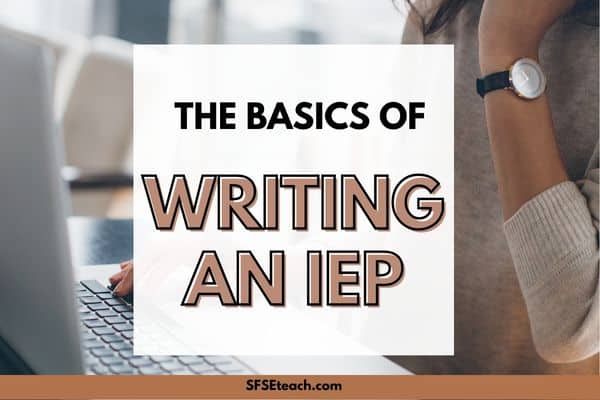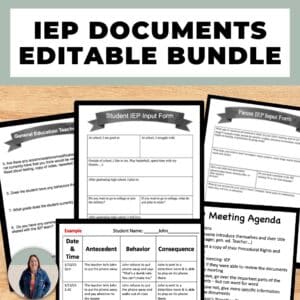Writing an IEP: A How to Guide for Teachers
Writing an IEP – Individualized Education Program – is one of the most important tasks a teacher can do. An IEP is a personalized plan for each student that outlines their individual learning needs and objectives.
An IEP must be tailored to the student’s specific needs, and should include goals, strategies, and resources to help them meet those goals. In this blog post, we’ll talk about the basics of writing an IEP for your student.
As a teacher, the thought of writing an IEP might feel overwhelming. I want to assure you that it doesn’t have to be!
An IEP should be tailored to meet the unique needs of each child, so as a teacher, you are in the best position to ensure your student gets the support he or she needs. Let’s take a look at the steps you need to take when writing an IEP.
Gathering Information
The first step in writing an effective IEP is to gather information about the student. This includes gathering data from assessments, such as standardized tests, as well as anecdotal evidence from teachers and other staff members who interact with the student on a regular basis. It’s important to get input from everyone involved in order to ensure that the IEP accurately reflects the student’s unique needs and abilities.
Start by understanding your student’s abilities. Before you can even begin writing the IEP, you need to understand your student’s disability and any related medical information. This will help you get on the same page with other members of the IEP team, including school administrators, special education teachers and/or case managers, parents/guardians, and your student.
Once everyone has a better understanding of your student’s strengths and weaknesses, you can move forward with creating an effective plan for their education.
Do you need help with special education paperwork?
These IEP input forms for parents, teachers, and students will help you to write your IEPs! Click here for 11 resources (at a discounted price!) that you will use before, during, and after your IEP meetings. You can also get them on TPT here.
Creating Goals
Once you have gathered all of the necessary information, it’s time to create goals for the student. These goals should be realistic but challenging—they should push students to reach their full potential while still being achievable within a reasonable timeframe. Your goals should also be measurable so that you can track progress over time.
Identify specific goals and objectives for your student’s learning plan. Once you have a better understanding of your student’s abilities and challenges, it’s time to establish specific goals for them.
Your goal should be measurable so that progress can be tracked over time. You’ll also want to consider how long it will take them to reach these goals—is it realistic in one semester? One year? Establishing reasonable goals ensures that students don’t become frustrated or overwhelmed while working towards them.
Developing Strategies & Resources
Once you have established your goals, it’s time to develop strategies and resources to help your students achieve those goals.
This can include developing lesson plans or activities tailored specifically for that student, utilizing technology or assistive devices (if applicable), or creating flexible seating arrangements or behavior management plans in order to meet their individual needs.
Develop strategies and tools to help reach those goals. Every IEP should include strategies and tools designed specifically for that individual student; this could include modifications such as reduced assignment loads or extended test times or accommodations such as visual aids or assistive technology devices like iPads or text readers. Whatever strategies and tools are included in an IEP should be based on best practices from research-based interventions as well as input from all members of the IEP team (including parents/guardians). The more input everyone has in developing these strategies and tools, the more successful they’re likely to be when implemented in the classroom setting.
Writing an IEP and Implementing It
Staying organized during the IEP meeting is necessary. You can get a free IEP meeting agenda here.
It’s important to involve parents or guardians in the entire process so that they can share their input and understand what will be expected of the student and how they can help their child meet their goals.
Writing an IEP is no small task—it requires time and effort on behalf of both teachers and families alike in order to ensure success for each individual student. However, if done correctly it can make all the difference in helping students reach their full potential!
By gathering information from multiple sources, setting measurable yet challenging goals, and developing strategies & resources tailored specifically for each individual learner, you can create an IEP that helps every student reach their academic and social/emotional milestones.
If you need help writing your IEPs, check out these resources that I made.










